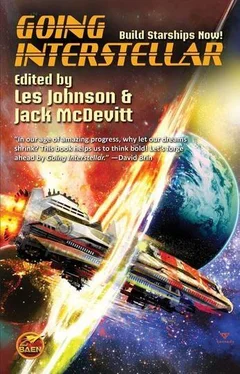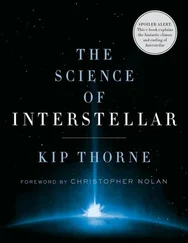The Best Existing Human-Constructed Antimatter Factories
Our most energetic particle accelerators can accelerate sub-atomic electrically charged particles to nearly the speed of light. When these energetic particle beams impact a target, some of the beam energy is converted to particle/antiparticle pairs.
When Robert Forward wrote his US Air Force report on advanced propulsion in 1983, there were three antimatter factories in the world. All were proton accelerators. One was in Russia, another was CERN, and the third was the Tevatron at the Fermi National Accelerator Laboratory near Chicago. None of these machines can be considered “small” by any standard. The Tevatron, for example, has a four mile circumference and is equipped with more than one thousand superconducting magnets operating at temperatures close to absolute zero.
Accelerated protons in the Tevatron circle the ring almost fifty thousand times per second at a peak velocity of 99.99999954 percent the speed of light in vacuum. To protect the surrounding environment from stray radiation, the Tevatron tunnel is 25 feet below ground.
Operating continuously, the Tevatron could produce and temporarily store, at enormous expense, about 1 nanogram per year of antiprotons. If all three of these devices were to be devoted to antimatter production and operated continuously, we might have a gram of the stuff after one hundred million years. We need to do a bit better for star flight!
Huge and imposing as it is, the Tevatron must be considered obsolete when it is compared to its cousin the Large Hadron Collider (LHC) at CERN. The LHC has a radius of over two and half miles and is equipped with 9,300 magnets for beam bending and focusing.
Within the fully operational LHC, particle beams will circulate 11,245 times each second. There will be up to six hundred million particle collisions per second and the best vacuum in the solar system will be maintained within this device.
One of the primary goals of the LHC is to produce, accumulate and store antiprotons. An AOL news item on November 18, 2010 reported that 38 anti-hydrogen atoms have been produced at the CERN by combining decelerated LHC-produced antiprotons with positrons produced by radioactive decay. (An article describing this experiment, by G. B. Andresen et al., is entitled “Trapped Antihydrogen” and was published November 17, 2010 in Nature online). These anti-atoms were stored for a record 0.2 seconds. Thirty-eight anti-atoms is a long way from what we will need to fuel a starship. And 0.2 seconds is a tiny duration compared with the months or years we will require the fuel to be stored. But it’s a good start!
Future Antimatter Factories in Sol Space
It is very unlikely that a future terrestrial civilization will pepper the Earth’s surface with LHC-sized accelerators. Almost certainly, antimatter factories will be created in interplanetary space rather than on the Earth.
Although humanity has some significant space accomplishments—lunar landings, Mars rovers, a semi-permanent international space station, extra-solar probes—we are a very long way from having an in-space technological infrastructure capable of tapping cosmic energy sources and converting the energy obtained to quantities of antimatter sufficient for interstellar flight.
The possible development of such an off-planet industrial base might follow the model of the Russian astrophysicist Nikolai Kardashev. Kardashev was interested in the aspects of an extraterrestrial civilization that we might detect over interstellar distances. He hypothesized that ET’s cosmic signature would likely depend on his energy level.
Humanity is now probably about 0.7 on the Kardashev scale. When and if our civilization can utilize all the solar energy striking our planet, then we will have advanced to the point where we will be a Kardashev Type I civilization.
If our economies continue to develop at the current pace, in a few thousand years we might evolve into a Kardashev Type II civilization. At that point, we will control the resources of the solar system and be able to tap the Sun’s entire radiant output.
A Type II civilization would have sufficient energy at its disposal to launch starships on a regular basis to a wide variety of galactic destinations. Over a time scale of millions of years, it could entirely occupy its galaxy and be able to tap the energy output of all stars in its home galaxy. Then it will be a Kardashev Type III civilization.
With such enormous energy reserves, intergalactic travel would ultimately develop. If this civilization continues and expands long enough, it could become the ultimate Type IV civilization that occupies the entire universe and can tap all of its energy.
Clearly, a Kardashev Type IV civilization does not (yet) exist in our universe. If it did, we would be, by definition, part of it. If a Kardashev Type III civilization existed in the Milky Way, we would be part of it as well (unless ET was constrained by some moral code such as Star Trek’s Prime Directive from influencing the development of primitive humanity). So the most energetic extraterrestrial civilizations we can hope to detect are expanding Type IIs.
If humanity evolves into a solar-system wide civilization, it could approach the capabilities of a Kardashev Type II civilization. We might be able to accomplish planetary engineering feats throughout the solar system, such as the terraforming of Mars.
But Mars is not the best location for a huge antimatter factory because it is farther from the Sun than the Earth is and receives about half the solar power. A much better location for a planet-wide antimatter factory is Mercury, the innermost world of our solar system.
Mercury is in a rather elliptical solar orbit with an average distance of 0.39 Astronomical Units (forty percent of Earth’s solar distance) from the Sun. This parched and airless world has a radius thirty-eight percent that of the Earth or about two thousand four hundred forty kilometers. Let us assume that the entire surface of Mercury is covered with solar photovoltaic cells. These supply energy to a gigantic version of the LHC with the single task of creating, decelerating and storing antimatter.
At the Earth’s location in the solar system (1 Astronomical Unit or one hundred fifty million kilometers from the Sun), the amount of solar power striking a surface facing the Sun (called the Solar Constant) is about fourteen hundred watts per square meter. Because solar light intensity varies as the inverse square of solar distance, the Solar Constant at Mercury’s average distance from the Sun is about nine thousand watts per square meter.
The solar power striking Mercury is therefore about 1.7 X 10 17watts, or approximately ten thousand times the total electrical power produced by our global civilization from all sources.
We next assume a twenty percent energy conversion efficiency for the solar cells coating Mercury’s surface. The electrical energy input into the hypothetical antimatter factory constructed on this hot, small planet, is therefore about 3 X 10 16watts.
If our Mercury antimatter factory works continuously and 4 X10 -5of the electrical energy input is converted into matter/antimatter pairs (as in the Tevatron), about 5 X 10 18Joules of energy is converted into antimatter each year. Every year, this antimatter factory will convert about 4 X 10 19Joules of energy into antiprotons.
Optimistically, we assume that all of these can be collected, decelerated, perhaps neutralized with positrons and safely stored until ready for use in the engines of a starship. The total antiproton annual production mass from this hypothetical antimatter factory can be calculated from a variation of Einstein’s famous equation (E = 2Mc 2), where the factor 2 accounts for the fact that half the energy (E, in Joules) is converted into protons, M is the antimatter mass in kilograms and c is the speed of light in vacuum (three hundred million meters per second).
Читать дальше












